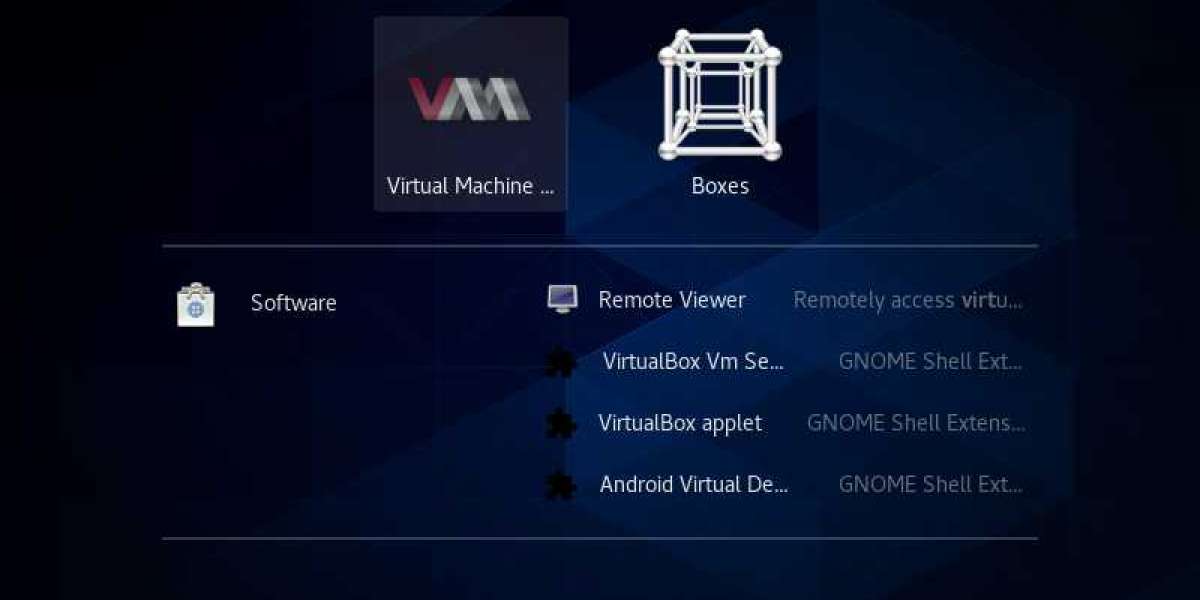How can I setup KVM on a CentOS 7 and use cloud images/cloud-init for installing guest VM?
Kernel-based Virtual Machine (KVM) is virtualization software for CentOS or RHEL 7. KVM turn your server into a hypervisor. This page shows how to setup and manage a virtualized environment with KVM in CentOS 7 or RHEL 7. It also described how to install and administer Virtual Machines (VMs) on a physical server using the CLI. Make sure that Virtualization Technology (VT) is enabled in your server’s BIOS. You can also run the following command to test if CPU Support Intel VT and AMD-V Virtualization tech:$ lscpu | grep Virtualization
Virtualization: VT-x
Step 1: Install kvm
Type the following yum command:# yum install qemu-kvm libvirt libvirt-python libguestfs-tools virt-install
Start the libvirtd service:# systemctl enable libvirtd
# systemctl start libvirtd
Step 2: Verify kvm installation
Make sure KVM module loaded using lsmod command and grep command:# lsmod | grep -i kvm
Step 3: Configure bridged networking
By default dhcpd based network bridge configured by libvirtd. You can verify that with the following commands:# brctl show
# virsh net-list
All VMs (guest machine) only have network access to other VMs on the same server. A private network 192.168.122.0/24 created for you. Verify it:# virsh net-dumpxml default
If you want your VMs avilable to other servers on your LAN, setup a a network bridge on the server that connected to the your LAN. Update your nic config file such as ifcfg-enp3s0 or em1:# vi /etc/sysconfig/network-scripts/enp3s0
Add line:
BRIDGE=br0
Save and close the file in vi. Edit /etc/sysconfig/network-scripts/ifcfg-br0 and add:# vi /etc/sysconfig/network-scripts/ifcfg-br0
Append the following:
DEVICE="br0"# I am getting ip from DHCP server #BOOTPROTO="dhcp"IPV6INIT="yes"IPV6_AUTOCONF="yes"ONBOOT="yes"TYPE="Bridge"DELAY="0"
Restart the networking service (warning ssh command will disconnect, it is better to reboot the box):# systemctl restart NetworkManager
Verify it with brctl command:# brctl show
Step 4: Create your first virtual machine
I am going to create a CentOS 7.x VM. First, grab CentOS 7.x latest ISO image using the wget command:# cd /var/lib/libvirt/boot/
# wget https://mirrors.kernel.org/centos/7.4.1708/isos/x86_64/CentOS-7-x86_64-Minimal-1708.iso
Verify ISO images:# wget https://mirrors.kernel.org/centos/7.4.1708/isos/x86_64/sha256sum.txt
# sha256sum -c sha256sum.txt
CREATE CENTOS 7.X VM
In this example, I�m creating CentOS 7.x VM with 2GB RAM, 2 CPU core, 1 nics and 40GB disk space, enter:# virt-install \
--virt-type=kvm \
--name centos7 \
--ram 2048 \
--vcpus=1 \
--os-variant=centos7.0 \
--cdrom=/var/lib/libvirt/boot/CentOS-7-x86_64-Minimal-1708.iso \
--network=bridge=br0,model=virtio \
--graphics vnc \
--disk path=/var/lib/libvirt/images/centos7.qcow2,size=40,bus=virtio,format=qcow2
To configure vnc login from another terminal over ssh and type:# virsh dumpxml centos7 | grep vnc
graphics type='vnc' port='5901' autoport='yes' listen='127.0.0.1'
Please note down the port value (i.e. 5901). You need to use an SSH client to setup tunnel and a VNC client to access the remote vnc server. Type the following SSH port forwarding command from your client/desktop/macbook pro system:$ ssh vivek@server1.cyberciti.biz -L 5901:127.0.0.1:5901
Once you have ssh tunnel established, you can point your VNC client at your own 127.0.0.1 (localhost) address and port 5901 as follows:
You should see CentOS Linux 7 guest installation screen as follows:
Now just follow on screen instructions and install CentOS 7. Once installed, go ahead and click the reboot button. The remote server closed the connection to our VNC client. You can reconnect via KVM client to configure the rest of the server including SSH based session or firewall.
How to create RHEL 7.x VM
Make sure you have rhel-server-7.3-x86_64-dvd.iso stored locally. In this example, I�m creating RHEL 7.x VM with 2GB RAM, 2 CPU core, 1 nic and 40GB disk space, enter:# virt-install \
--virt-type=kvm \
--name rhel7 \
--memory=2048,maxmemory=4096 \
--vcpus=2 \
--os-variant=rhel7.3 \
--cdrom=/var/lib/libvirt/boot/rhel-server-7.3-x86_64-dvd.iso \
--network=bridge=virbr0,model=virtio \
--graphics vnc \
--disk path=/var/lib/libvirt/images/rhel7.qcow2,size=40,bus=virtio,format=qcow2
To configure vnc login from another terminal over ssh and type:$ sudo virsh dumpxml rhel7 | grep vnc
graphics type='vnc' port='5904' autoport='yes' listen='127.0.0.1'
Please note down the port value (i.e. 5904). You need to use an SSH client to setup tunnel and a VNC client to access the remote vnc server. Type the following SSH port forwarding command from your client/desktop:$ ssh vivek@server1.cyberciti.biz -L 5904:127.0.0.1:5904
Once you have ssh tunnel established, you can point your VNC client at your own 127.0.0.1 (localhost) address and port 5904 to continue with RHEL 7.x installation.
Step 5: Using cloud images
The above installation method is okay for learning purpose or a single VM. Do you need to deploy lots of VMs? Try cloud images. You can modify pre built cloud images as per your needs. For example, add users, ssh keys, setup time zone, and more using Cloud-init which is the defacto multi-distribution package that handles early initialization of a cloud instance. Let us see how to create CentOS 7 vm with 1024MB ram, 20GB disk space, and 1 vCPU.
GRAB CENTOS 7 CLOUD IMAGE
# cd /var/lib/libvirt/boot
# wget http://cloud.centos.org/centos/7/images/CentOS-7-x86_64-GenericCloud.qcow2
CREATE REQUIRED DIRECTORIES
# D=/var/lib/libvirt/images
# VM=centos7-vm1 ## vm name ##
# mkdir -vp $D/$VM
mkdir: created directory '/var/lib/libvirt/images/centos7-vm1'
CREATE META-DATA FILE
# cd $D/$VM
# vi meta-data
Append the following:
instance-id: centos7-vm1local-hostname: centos7-vm1
CRETE USER-DATA FILE
I am going to login into VM using ssh keys. So make sure you have ssh-keys in place:# ssh-keygen -t ed25519 -C "VM Login ssh key"
See “How To Setup SSH Keys on a Linux / Unix System” for more info. Edit user-data as follows:# cd $D/$VM
# vi user-data
Add as follows (replace hostname, users, ssh-authorized-keys as per your setup):
#cloud-config # Hostname managementpreserve_hostname: Falsehostname: centos7-vm1fqdn: centos7-vm1.nixcraft.com # Usersusers: - default - name: vivek groups: ['wheel'] shell: /bin/bash sudo: ALL=(ALL) NOPASSWD:ALL ssh-authorized-keys: - ssh-ed25519 AAAAC3NzaC1lZDI1NTE5AAAAIIMP3MOF2ot8MOdNXCpHem0e2Wemg4nNmL2Tio4Ik1JY VM Login ssh key # Configure where output will gooutput: all: " /var/log/cloud-init.log" # configure interaction with ssh serverssh_genkeytypes: ['ed25519', 'rsa'] # Install my public ssh key to the first user-defined user configured# in cloud.cfg in the template (which is centos for CentOS cloud images)ssh_authorized_keys: - ssh-ed25519 AAAAC3NzaC1lZDI1NTE5AAAAIIMP3MOF2ot8MOdNXCpHem0e2Wemg4nNmL2Tio4Ik1JY VM Login ssh key # set timezone for VMtimezone: Asia/Kolkata # Remove cloud-init runcmd: - systemctl stop network systemctl start network - yum -y remove cloud-init |
COPY CLOUD IMAGE
# cd $D/$VM
# cp /var/lib/libvirt/boot/CentOS-7-x86_64-GenericCloud.qcow2 $VM.qcow2
CREATE 20GB DISK IMAGE
# cd $D/$VM
# export LIBGUESTFS_BACKEND=direct
# qemu-img create -f qcow2 -o preallocation=metadata $VM.new.image 20G
# virt-resize --quiet --expand /dev/sda1 $VM.qcow2 $VM.new.image
Overwrite it resized image:# cd $D/$VM
# mv $VM.new.image $VM.qcow2
CREATING A CLOUD-INIT ISO
# mkisofs -o $VM-cidata.iso -V cidata -J -r user-data meta-data
CREATING A POOL
# virsh pool-create-as --name $VM --type dir --target $D/$VM
Pool centos7-vm1 created
INSTALLING A CENTOS 7 VM
# cd $D/$VM
# virt-install --import --name $VM \
--memory 1024 --vcpus 1 --cpu host \
--disk $VM.qcow2,format=qcow2,bus=virtio \
--disk $VM-cidata.iso,device=cdrom \
--network bridge=virbr0,model=virtio \
--os-type=linux \
--os-variant=centos7.0 \
--graphics spice \
--noautoconsole
Delete unwanted files:# cd $D/$VM
# virsh change-media $VM hda --eject --config
# rm meta-data user-data centos7-vm1-cidata.iso
FIND OUT IP ADDRESS OF KVM VM (DHCP ADDRESS)
# virsh net-dhcp-leases default
LOG IN TO YOUR VM
Use ssh command:# ssh vivek@192.168.122.85
Useful commands
Let us see some useful commands for managing VMs.
List all VMs
# virsh list --all
Get VM info
# virsh dominfo vmName
# virsh dominfo centos7-vm1
Stop/shutdown a VM
# virsh shutdown centos7-vm1
Start VM
# virsh start centos7-vm1
Mark VM for autostart at boot time
# virsh autostart centos7-vm1
Reboot (soft safe reboot) VM
# virsh reboot centos7-vm1
Reset (hard reset/not safe) VM# virsh reset centos7-vm1
Delete VM
# virsh shutdown centos7-vm1
# virsh undefine centos7-vm1
# virsh pool-destroy centos7-vm1
# D=/var/lib/libvirt/images
# VM=centos7-vm1
# rm -ri $D/$VM
To see a complete list of virsh command type# virsh help | less
# virsh help | grep reboot
A note about virt-builder
One can build virtual machine images quickly on a CentOS 7 using virt-builder command.
List VM images
virt-builder --list
virt-builder --list | grep -i fedora
virt-builder --list | grep -i debian
virt-builder --list | grep -i ubuntu
virt-builder --list | grep -i freebsd
Build Ubuntu 16.04 LTS vm
# virt-builder ubuntu-16.04 \
--size=20G --format qcow2 -o /var/lib/libvirt/images/ncbz01-disk01.qcow2 \
--hostname ncbz01 --network --timezone Asia/Kolkata \
--firstboot-command "dpkg-reconfigure openssh-server" \
--edit '/etc/default/grub:
s/^GRUB_CMDLINE_LINUX_DEFAULT=.*/GRUB_CMDLINE_LINUX_DEFAULT="console=tty0 console=ttyS0,115200n8"/' \
--run-command update-grub
Sample outputs (note it will display random root password on screen):
[ 3.9] Downloading: http://libguestfs.org/download/builder/ubuntu-16.04.xz######################################################################## 100.0%[ 121.7] Planning how to build this image[ 121.7] Uncompressing[ 126.5] Resizing (using virt-resize) to expand the disk to 20.0G[ 142.1] Opening the new disk[ 143.8] Setting a random seed[ 143.8] Setting the machine ID in /etc/machine-id[ 143.8] Setting the hostname: ncbz01[ 144.3] Setting the timezone: Asia/Kolkata[ 144.3] Setting passwordsvirt-builder: Setting random password of root to 1KTLsuVx14k989eq[ 144.9] Finishing off Output file: /var/lib/libvirt/images/ncbz01-disk01.qcow2 Output size: 20.0G Output format: qcow2 Total usable space: 18.6G Free space: 17.7G (94%) |
Now image has been built. Let us install VM:# virt-install --import --name ncbz01 \
--ram 2048 \
--vcpu 2 \
--disk path=/var/lib/libvirt/images/ncbz01-disk01.qcow2,format=qcow2 \
--os-variant ubuntu17.04 \
--network=bridge=virbr0,model=virtio \
--noautoconsole
Start it:# virsh start ncbz01
Login into it:# virsh console ncbz01









